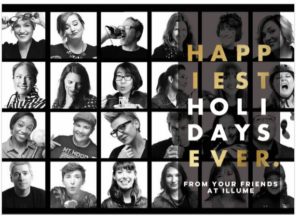
This spring has been a season of marches and protests as engaged individuals have turned out by the millions in support of immigrants and refugees, to oppose the Muslim ban, protest changes to the Affordable Care Act, and not to mention the Women’s March in January. On Earth Day, April 22, another cohort marched, this time at a March for Science. The march in Washington was cold and rainy, a dreary day brightened by colorful ponchos, umbrellas, and posters.
True to nerdy-form, the puns and wordplay on signs and posters were abundant: many signs read: “If you’re not part of the solution, you’re part of the precipitate”. Indeed, the camaraderie at this march was certainly in-group humor as people recognized puns based on chemical signatures or elements (“NaCL/NaOH : the academic base is under a salt” read one).
Based on the posters, people cared about a grab-bag of issues: cuts to NSF and NIH funding, general concerns about climate change, support for science in education, medical/healthcare issues, and homage to notable scientists.
As an anthropologist and a qualitative social scientist, I couldn’t help but wonder, where do these scientific disciplines fit into the broader discourse? At the march, it seemed ‘science’ had been reduced to just one version of science. It was science that began and ended with STEM; science that is encapsulated by the icons of Bill Nye and Neil deGrasse Tyson (quotes from and pictures of whom graced so many posters). I saw little representation from social or behavioral sciences, although our funding has been cut too—indeed, anthropology has been singled out by Florida governor Rick Scott as a degree that is less useful than a STEM degree (and thus less deserving of state funding).
So where do social sciences fit within the broader context of capital letter Science? At this critical moment, social sciences need to work hand in hand with hard sciences. The broad contribution of the social sciences has been to create meaning and context around which we can leverage the benefits of the hard sciences. Because, indeed, “science” is not a neutral actor; like all knowledge, it is contingent and situated. All information and knowledge producers exist in a social world—one where science is used (or misused) to broker power. As others, such as Andrew Jewett, have pointed out, demanding a policy that is tied to science won’t inevitably lead to a more just outcome. As Jewett puts it: “Yet more and better data is hardly enough to ensure equality and justice. Societies employ science in accordance with their leading values, interests, and power structures.”
A cursory look at the history of science suggests that scientific means and methods can be used for unethical and indeed nefarious purposes (the Tuskegee Study; Nazi genetic experimentations etc). We can also look to the racial science of the 19th century when a substantial scientific effort was expended to produce (through measurement) a basis for racial hierarchies and to justify the inequality of a system of white supremacy. These studies meticulously measured collar bones and tibias of people of different races, measured and mapped skull shapes in an attempt to provide hierarchies of difference and capability. Although these studies have now been overturned, ghosts of this kind of race science persist, as Lindy Braun demonstrates in her discussion of the spirometry machines that are used to evaluate lung function (see also).
So, as we march and as we fight, let us remember that the scientific method alone does not ensure justice, equality, and the greater good. Instead, material sciences or “hard science” must be paired with social sciences and humanities and must constantly ask itself “to what end?” and “for whom?”.






